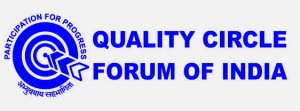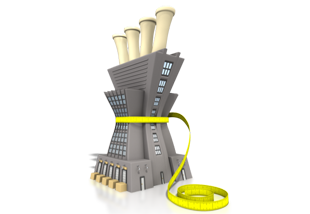In the recent economic down trend, the world over, the conditions have necessitated Lean thinking in every aspect of our working.
‘Lean’ simply means a systematic approach to identifying all types of waste and optimum utilization of available resources, continuous improvement, ensuring smooth flow of the product in the supply and manufacturing chain and meeting customers demand.
In short, ‘Lean’ is about “doing more with less” – less inventory, less time, less space, less movement, less man hours and with less money. Lean is speed with which one can deliver a quality product or service by ‘doing a job right first time’.
‘Quality Circles Concept’ started in 1962 in Japan as Quality Control Circles and since 1982, India is practicing
This made Mr. D K Srivastava, Executive Director, QCFI to evolve a new concept – Lean Quality Circle (LQC) and presented in the Board Meeting held March, 2010. After their approval, the concept was implemented in few organizations on trial basis in Units of Parle & NTPC a case study portraying the problem solving techniques using LQC methodology were presented in the Board Meeting held in September, 2010 and was well appreciated.

He has to his credit a few new Quality Concepts:
Jagriti Group (Awareness Group),
5-S at Home,
Integrated Approach For Modern Quality Concepts for Business Excellence
Quality Circles with an objective of ‘self and mutual development’. Needless to say, for development, we have to learn each and every aspect in a systematic way. In Quality Circles, members learn as to how to work in a team, how to conduct meeting, selection of problem through group consensus, so that team cohesiveness is maintained. For the development of a human being, development of brain is a must. To develop brain power, brain storming is required. For brain storming some specific topic is required for thinking. The best way is to think about their own work-related problems. ie. brain storming will be used to analyse and solve problems as well as to develop themselves.
For team work, if team members are from the same work area, or doing similar type of work, problems will be common and if the team selects their own work related problems, one by one, from simpler problem to tougher problem, each team member will apply their brain and by this way problem will be solved as well as development of people will be there, which would amount to knocking down two birds with one stone. If team members are from the same work area doing similar type of work as defined above in Quality Circles, then problems identified will be common, known to everyone and understood. This will enable them to select the problems one by one, analyse and solve them. It is through synergistic team work that the development of the people mutually takes place. Quality Circles are not merely problem solving groups, but a medium for people’s development and at the same time for solving problems through the application of their knowledge and experience.
The effect of such activity could be seen in many of the Quality Circle case studies. Circle members are able to take the problem, analyse and solve them. After observing the results, they prepare the case studies in 12 step method format or 7 QC step method which reflects that they know all the steps of problem solving very well. This demonstrates that they have acquired adequate knowledge, and are capable of preparing and presenting a case study in a systematic 12 steps way, by using appropriate problem solving tools and techniques. Lean Concept and Quality Circles:
The lean concept makes us to think of such cases where we are not utilizing the potential of the people, who have developed themselves to solve the problems. Ultimately, this is the outcome of the Quality Circle Concept. Hence, we decided to go for the next step, ie. ‘Lean Quality Circles’.
When we conceived Lean QC concept, we have realized and thought as to how to use the mature, highly potential people, who have acquired knowledge and experience by working in Quality Circles or other SGA group. If we have to utilize them for higher purposes, we should give them additional inputs of knowledge through education and training and put them on Lean Manufacturing projects. This brings us to the concept of “Lean Quality Circle”. It is nothing but graduating from basic Quality Circle or SGA to Lean Quality Circle. Lean Quality Circle has the option to co-opt members from other than their own work area, if the project demands, as in the case of management cross functional teams. Hence this is a cross functional team for non executives.
In Quality Circle, people are actively involved in learning the systematic way of solving problem by applying proper problem solving tools and techniques they have learnt, develop themselves as a problem solvers without having to refer to superiors every time.
- Over Production
- Defects & Rework
- Unnecessary Transportation
- Unnecessary Motion
- Excess inventory
- Waiting time
- Over processing
Then the most important eighth waste was added to this list which is “underutilized employee’s creativity”. This gave us food for thought about utilizing the creativity of employees who have developed themselves through SGA/QC/TPM Circles etc. This has inspired us to develop a new concept of ‘Meeting the higher requirements by utilizing human beings creativity’.
If Lean Quality Circle is to be defined, it could be done as follows:
- Is a small group comprising of Non-Executives
- Who come from a problem area
- And who have acquired adequate knowledge in problem solving and group synergy
- Who can by themselves identify, select critical problems with reference to sectional /departmental / organizational goals
- Take the help of their immediate Line Executive, who will be co-project owner and mentor to the group
- May co-opt members from other than their own work area, as per the project’s demand
- Analyse and solve problems using appropriate tools and techniques
Group Members:
Group Members will be those who are related to the project taken. There may be 2 or 3members from the same area and a few additional members added and who are relatedto the project, from other department, may also be co-opted. Hence members will beproject based, guided by one of the executives of that area where problem belongs. It may be a core group of 2 to 3 members with guide / facilitator co-opting other membersbased on project taken and need.
Frequency of Meeting:
There will not be any fixed regular formal meetings. Meetings will be informal and at the place / equipment, where the problem exists. Frequency of the meeting will depend upon the decision of the group members and as and when required. Weekly progress reports will be noted by the Leader or Dy. Leader in the meeting register.
Selection of Problem:
The problems can be taken up from the already identified problems / problem bank based on management goals / objectives. Problem may also be taken from the current priority problems of their work areas decided by the group member. After selecting the problem, the same has to be registered with the coordinator and registration number obtained.
Problem Solving Steps:
Define, measure the magnitude of the problem, analyse the problem, improve and control. This is nothing but DMAIC., yet not to be confused with Six Sigma approach.
|
DIFFERENCE BETWEEN QUALITY CIRCLE AND LEAN QUALITY CIRCLE
|
|||
| Sl. No | Particulars | Quality Circle | Lean Quality Circle |
| 1. | Concept | The main objective of Quality Circles is “self” and mutual development, cohesive team work and engaged in continuous improvement activities, thus improving their quality of work life”. |
LQC is applied to turn out large number of small projects to meet company’s objective / goal. Hence this is an acid test for those who have formed QC for their self and mutual development and have learnt to analyse and solve the problem.
|
| 2. | Identification of Problem |
QC Members with the help of Round Robin Method, try to identify their own day to day work related problems which are of a recurring nature. |
In LQC, problems can be taken from the problem bank. Instant problem can also be taken. LQC mainly concentrates to take the
project resulting in value addition or reduction / elimination of different types of wastes aligned to company’s goals. |
| 3. | Problem Selection |
Identified problems are segregated into A, B & C categories. “A” simple problem is taken first, and “C” the toughest problem will be taken at the end of “B” type of problems. |
Anyone can select the problem from problem bank or with his / her own initiative any problem relating to loss of quality, production loss, wastage reduction, non value adding processes etc and consensus arrived at.
|
| 4. | Meetings | We all know that QC’s have periodic regular meetings to discuss, analyse and final solutions to the problems on a pre-fixed schedule. |
Generally LQC members discuss their problems at the work place where the problem has occurred. Meetings are based on project needs., it may be even three times in a day.
|
| 5. | Problem Solving Steps |
QC’s follow the 12 steps methodology evolved by us, starting from identification of problems to solution, implementation, follow up and review. |
In the case of LQC’s, they will follow the 5steps of DMAIC approach: That is: (i) Defining of Problem (ii) Measure the Problem (iii) Analyse the problem to find out the root cause. (iv) Suggest improvement (solution) (v) Control it by not allowing it to slip back. |
| 6. | Approval of project |
Project will have to be approved by the Steering Committee or the executives nominated by the Steering Committee. | LQC’s, project also will have to be approved by the Steering Committee or the executives nominated by the Steering Committee. |
| 7. | Gains | In the case of QC’s, the whole objective is to “develop people”. In other words, self and mutual development through QC activities. Hence, the focus is not in terms of how much money is gained through the project / problem solving. |
In the case of LQC’s, it is directly measurable with respect to organizational goals in terms of not only process improvement, but also improvements in quality, cost reduction and faster delivery. So this reflects on the bottom line gains. |










